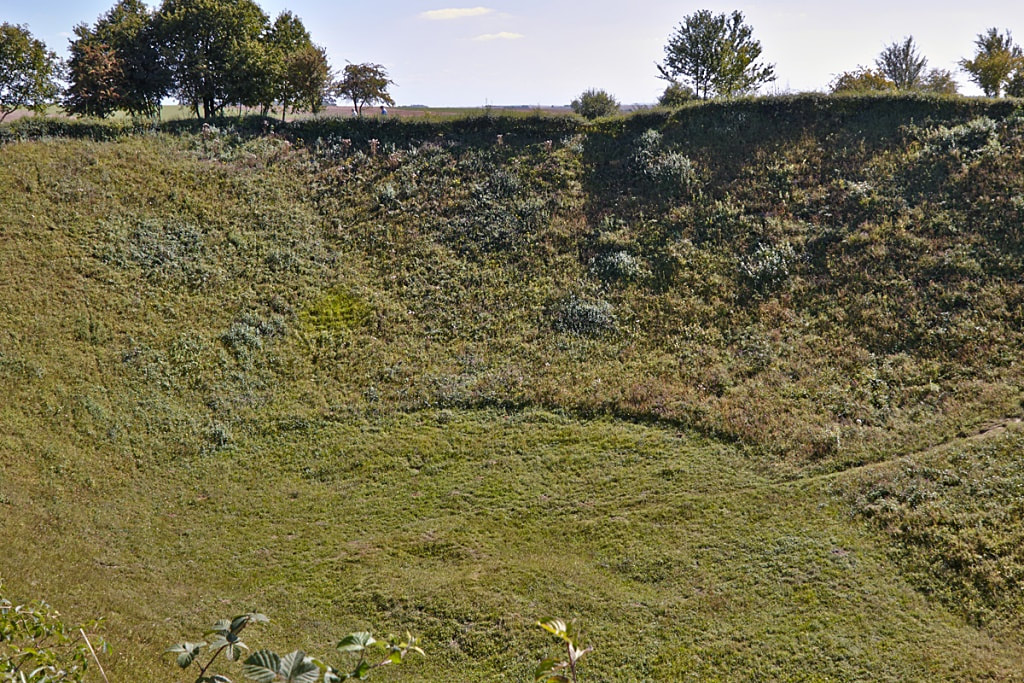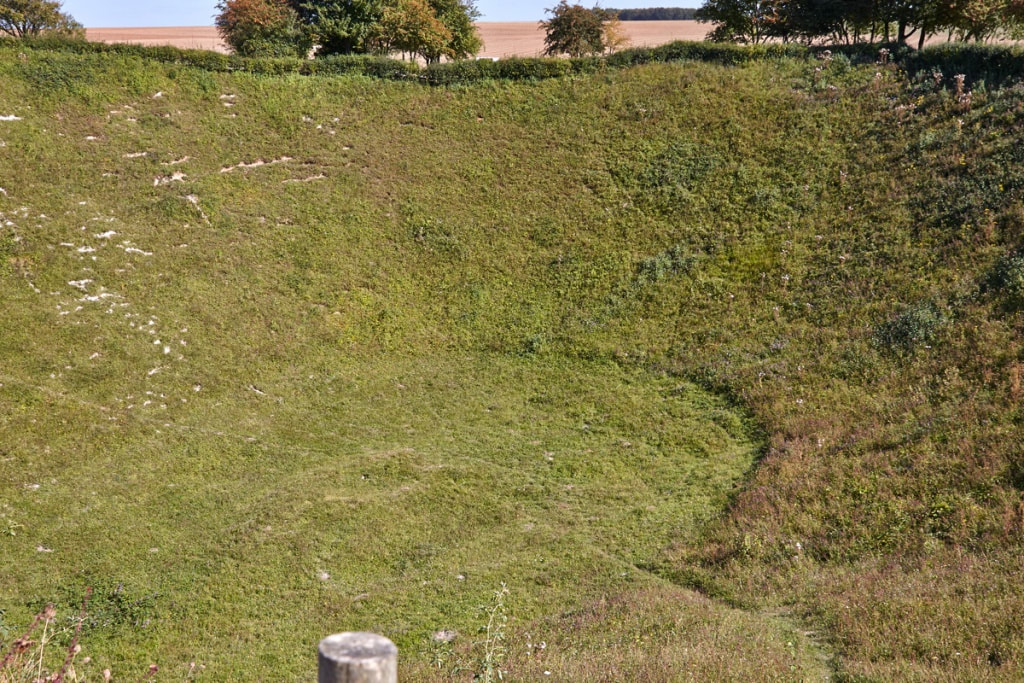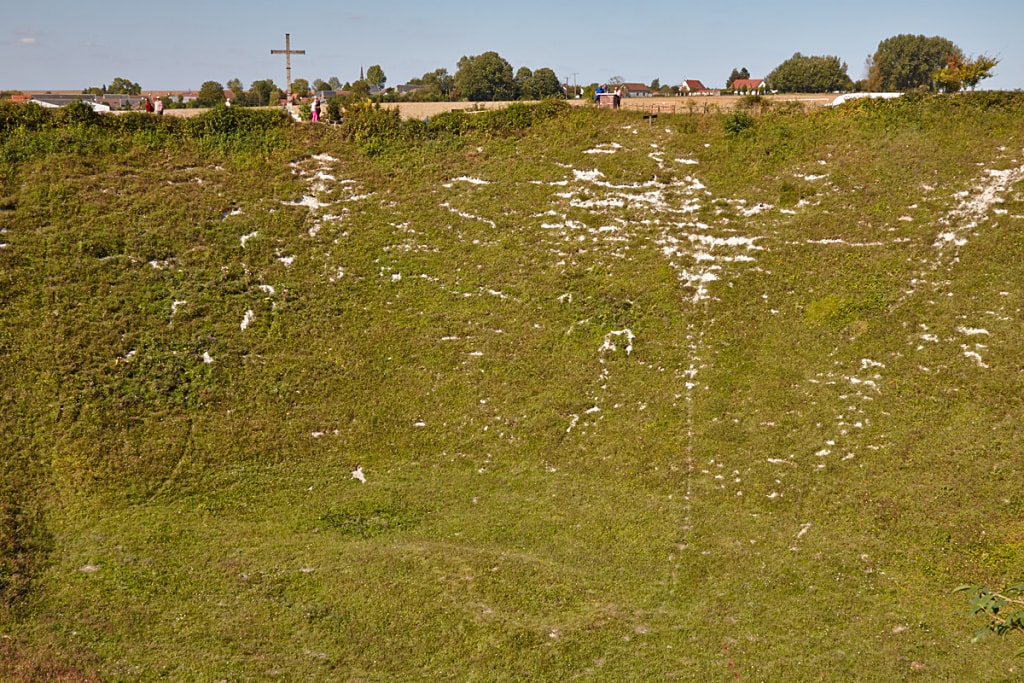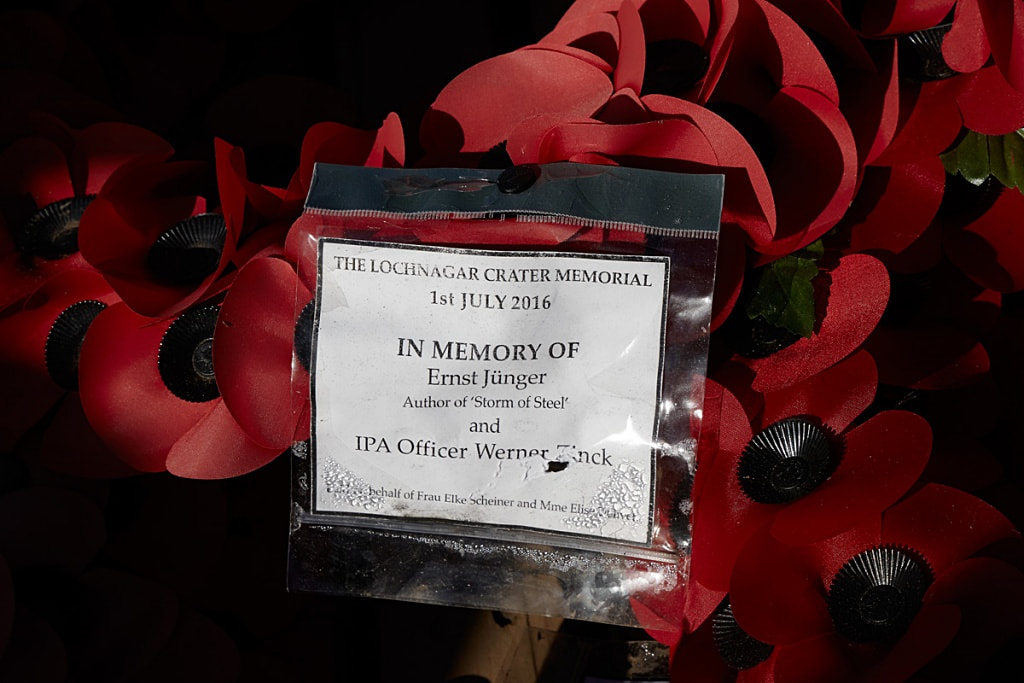LOCHNAGAR CRATER
La Boisselle
Somme
France
Location Information
The crater is located close to the village of La Boisselle on the Somme.
Historical Information
The Lochnagar Crater was created by a large mine placed beneath the German front lines on the first day of the Battle of the Somme, it was one of 19 mines that were placed beneath the German lines from the British section of the Somme front, to assist the infantry advance at the start of the battle.
The British named the mine after ‘Lochnagar Street’, a British trench where the Tunnelling Companies of the Royal Engineers dug a shaft down about 90 feet deep into the chalk; then excavated some 300 yards towards the German lines to place 60,000 lbs (27 tons) of ammonal explosive in two large adjacent underground chambers 60 feet apart. Its aim was to destroy a formidable strongpoint called ‘Schwaben Höhe’ (Swabian Heights) in the German front line, south of the village of La Boisselle in the Somme département.
On Saturday 1st July 1916, at 7.28am, two minutes before the attack began, the mine was exploded, leaving the massive crater 70ft (21m) deep and 330 ft (100 m) wide, that we see today.
Debris was flung almost a mile into the air, as graphically recorded by Royal Flying Corps pilot Cecil Lewis in his book ‘Sagittarius Rising’:
‘The whole earth heaved and flared, a tremendous and magnificent column rose up into the sky. There was an ear-splitting roar, drowning all the guns, flinging the machine sideways in the repercussing air. The earth column rose higher and higher to almost 4,000 feet.’
The reason the Crater is so large is that the chambers were overcharged. Meaning, sufficient explosive was used to, not only break the surface and form a crater, but enough to cause spoil to fall in the surrounding fields and form a lip around the Crater of approximately 15ft high, to protect the advancing British troops from enfilade machine-gun fire from the nearby village of La Boisselle.
The Crater was captured and held by British troops but the attack on either flank was defeated by German small-arms and artillery fire – except on the extreme right flank and between La Boisselle and the Lochnagar Crater.
More information can be found by visiting The Lochnagar Crater Foundation
The crater is located close to the village of La Boisselle on the Somme.
Historical Information
The Lochnagar Crater was created by a large mine placed beneath the German front lines on the first day of the Battle of the Somme, it was one of 19 mines that were placed beneath the German lines from the British section of the Somme front, to assist the infantry advance at the start of the battle.
The British named the mine after ‘Lochnagar Street’, a British trench where the Tunnelling Companies of the Royal Engineers dug a shaft down about 90 feet deep into the chalk; then excavated some 300 yards towards the German lines to place 60,000 lbs (27 tons) of ammonal explosive in two large adjacent underground chambers 60 feet apart. Its aim was to destroy a formidable strongpoint called ‘Schwaben Höhe’ (Swabian Heights) in the German front line, south of the village of La Boisselle in the Somme département.
On Saturday 1st July 1916, at 7.28am, two minutes before the attack began, the mine was exploded, leaving the massive crater 70ft (21m) deep and 330 ft (100 m) wide, that we see today.
Debris was flung almost a mile into the air, as graphically recorded by Royal Flying Corps pilot Cecil Lewis in his book ‘Sagittarius Rising’:
‘The whole earth heaved and flared, a tremendous and magnificent column rose up into the sky. There was an ear-splitting roar, drowning all the guns, flinging the machine sideways in the repercussing air. The earth column rose higher and higher to almost 4,000 feet.’
The reason the Crater is so large is that the chambers were overcharged. Meaning, sufficient explosive was used to, not only break the surface and form a crater, but enough to cause spoil to fall in the surrounding fields and form a lip around the Crater of approximately 15ft high, to protect the advancing British troops from enfilade machine-gun fire from the nearby village of La Boisselle.
The Crater was captured and held by British troops but the attack on either flank was defeated by German small-arms and artillery fire – except on the extreme right flank and between La Boisselle and the Lochnagar Crater.
More information can be found by visiting The Lochnagar Crater Foundation











